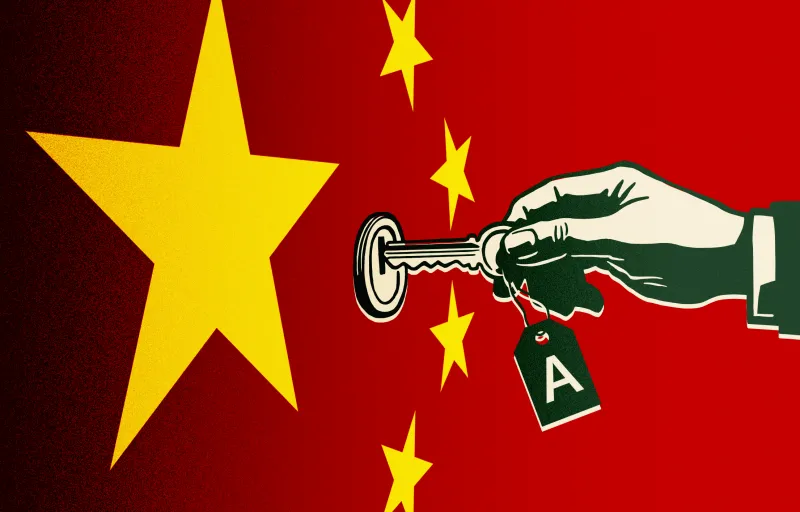
Investor interest in China is at an all-time high as the nation embraces a new “openness.” Its president, Xi Jinping, seems to make all the right economic moves, pushing China to the forefront of any discussion on global growth and opportunities. Here’s some of what you need to know as you consider your China investment strategy.
Approaching its first anniversary, how successful has Bond Connect been in reaching its key objectives?
Launched in July last year, the primary aim of Bond Connect was to provide international investment institutions with a more attractive and efficient access channel to the world’s third largest bond market. As well as facilitating existing demand for Chinese bonds, it would stimulate new inflows by meeting a key criterion for their inclusion in international indices. As a pioneer of electronic markets for 20 years – and both a design partner and operator of the first trading platform to link to Bond Connect – we at Tradeweb believe it is well positioned to meet these objectives.
Today, a wide range of international investors are already accessing the Chinese Interbank Bond Market via Bond Connect: more than 300 overseas institutions from almost 30 jurisdictions have registered since launch. Total foreign bond holdings have risen from RMB842 billion in June 2017 to RMB1.305 trillion in March, albeit still representing just 2-3% of market share.
Through May this year, more than 5,000 transactions in Chinese cash bonds have been executed on Tradeweb, as global institutions leverage our end-to-end electronic workflows to access liquidity for all instruments tradable in the CIBM.
As the first trading venue to link to Bond Connect, does Tradeweb have a competitive edge over other platforms looking to connect to the scheme?
Tradeweb has gained a deep understanding of the Chinese bond market since it became the first and only platform to link to Bond Connect at launch. Not only have we established deeply entrenched relationships with onshore market makers, investors, regulators and market infrastructure operators, but we have been intimately involved with the feedback loop on how to evolve Bond Connect to increase its utility to users and how to diversify its service offering.
For example, Tradeweb is working closely with the China Foreign Exchange Trading System to facilitate block trades via Bond Connect. Besides being a key condition for index inclusion, allocation of block trades is important to institutional investors, enabling them to trade large orders without suffering adverse market impact.
We’re also working to further improve transparency through the introduction of indicative pricing. In most markets, a key advantage of electronic trading is the ability to easily identify potential counterparties for RFQ inclusion, thus supporting effective price discovery.
Moreover, the implementation of Delivery-Versus-Payment settlement, which will reduce counterparty risk for investors, and the clarification of tax collection policies will be the catalyst for further adoption of Bond Connect by international institutions, helping it reach its objectives even more effectively.
Learn more about how Bond Connect is simplifying investment in China.
Did You Know…
- Bloomberg has announced it will include China in the Bloomberg Barclays Global Aggregate Bond (Global Agg) Index, recognizing, after decades of reform, that China has a developed bond market.
- Chinese renminbi-denominated government and policy bank bonds will be included in the Global Agg starting April 2019.
- Inclusion is subject to some operational enhancements, the ability to allocate block trades across portfolios, and clarification of tax treatment of the bonds.
- The weight of China in the index will scale up slowly over a 20-month period ultimately reaching 5.49% of the overall index.
- When fully included, China will represent the fourth-largest currency weight in the index (after the USD, euro, and Japanese yen).
- Assuming that the assets managed to the Global Agg index stay flat, it’s estimated that approximately US$100 billion would flow into China’s bond market just from passive flows. This will be a game changer for the world’s third-largest bond market, which historically has had little foreign participation.
China’s M&A activity related to Belt & Road reached a record high in 2017, according to Thomson Reuters, with $33.3 billion in total deal value of outbound acquisitions. Singapore, Mongolia, UAE, Russia, and South Korea were the top five destinations for those investments.
The willingness of the current U.S. administration to ignore or fail to effectively engage with nations in Central and South America has opened up that region to both official and unofficial inclusion what could eventually be a global Belt & Road. It is noteworthy that at the event in Beijing last year, the presidents of Argentina and Chile were present, along with Brazil’s secretary for strategic affairs. According to a recent report in The New Yorker, “As the U.S. has retreated from Latin America, China’s influence has grown. Since 2005, banks linked to Beijing have provided more than $150 billion in loan commitments to the region – some years, more than the World Bank and Intra-American Development Bank combined.”
According to the same report, when a major expansion of the Panama Canal was completed in June 2016, the first ship to pass through was an “enormous Chinese freighter, designed to fit the new dimensions.”
With Xi’s signature Belt and Road project gathering momentum even in some unexpected places (more on this later), and a rebalancing of the Chinese economy no longer an act but a reality, China’s reputation for getting things done is intact. The country accounts for 28 percent of global growth, according to the IMF, its household net worth has tripled since 1992, and services and consumption have been bigger than construction and manufacturing since 2013 (how’s that for rebalancing?).
Busted: The Biggest Myth About Investing in China
There are actual risks to consider when weighing opportunities to invest in China – and then there are the misperceptions that can shape an inaccurate view of the market. The facts that debunk the biggest myth of all turn out to be great news for investors. Here’s a nuanced view of why that’s the case.
Learn more about capitalizing on China’s economic transformation.
What economists are saying
Three additional insights from Grindal:
- “One of the key takeaways from the past several years in China is that the government will do whatever it needs to do to keep the party in power. A continuation of gradual reforms could potentially lead to slower growth, but the government has no incentive to go to an extreme as that could possibly create social instability, and thus a probable loss of control. At NDR, we’ve long argued that China is the economic powerhouse that it is because of its people. Therefore, we like to closely monitor measures of consumer happiness, which, for the most part, continue to look favorable.”
- “China consumer confidence in Q4 2017 reached its highest since 1995, and consumers remain very upbeat. Of course, we can’t turn a blind eye to other elements that contribute to happiness, such as reducing pollution and China’s high levels of income inequality. But for the time being, the outlook remains positive.”
- “One of our key measures for gauging the danger of social instability is monitoring unemployment. Given that the official unemployment rate has many flaws, we instead put our focus on the job openings to job seekers ratio. According to the latest data, labor markets are the tightest they’ve ever been, with the ratio at a record-high 1.2.”
Very few people outside of the White House are happy about the specter of trade wars, including U.S. business leaders. On May 29, the Trump Administration announced that within a month it would move forward with a plan to impose a 25 percent tariff on $50 million worth of Chinese goods – and this just a week after Treasury Secretary Mnuchin declared the trade war with China was “on hold.”
U.S. Chamber of Commerce President and CEO Thomas Donohue didn’t mix words in his response to President Trump’s plans. While he believes China’s unfair trade practices and policies must be dealt with, Donohue said “the use of tariffs puts all the burden on American companies and consumers. The administration’s decision to impose tariffs on $50 billion worth of Chinese products is in fact a tax on American consumers and will undermine the competitiveness of U.S. companies, just as the administrations steel tariffs have dramatically raised prices on steel in the U.S.”*
So, who would have the upper hand in a U.S. vs China trade war? Here are some factors to consider, according to Alejandra Grindal, Senior International Economist, Ned Davis Research Group.
- On the surface, China does not have the retaliatory power to win a trade war with the U.S. Chinese exports to the U.S. totaled $429.8 billion in 2017, nearly 20 percent of its total exports (see chart below), while a much smaller $153.9 billion of U.S. goods were imported into China, representing about 8 percent of U.S. overseas shipments.
- If the U.S. goes through with the $50 billion in tariffs and a subsequent $100 billion more it has also threatened, a counter tariff of $150 billion by China would essentially cover all of the U.S. exports to China. In other words, China would have difficulty invoking retaliatory tariffs with the same potency as the U.S.
- But China still could inflict a decent amount of damage on the U.S. economy if the threat were to come into play – which seemed to be the intent as of May 29.
- China could focus its tariffs on specific export categories where it fulfills a significant portion of U.S. demand, as well as emphasizing key U.S. voting districts.
- At the top of China’s proposed retaliatory tariffs are several agricultural products, including soybeans, corn, cotton, and sorghum. U.S. sorghum, barley, and oat exporters rely on China for nearly 75 percent of their demand, while U.S. soybean farmers depend on China for over half their overseas purchases. Many of these farming districts are in Republican-voting states that supported Trump in 2016.
- China also makes up a large share of U.S. exports of autos, cotton, and tobacco also produced in Republican-leaning or swing states. Interestingly, cranberries and whiskey are also made it onto China’s proposed tariff list. These are important exports from Wisconsin and Kentucky – home to the U.S. Senate and (for a while longer) House leaders. Given China’s single-party rule, the U.S. cannot retaliate in a similar (politically targeted) way.
- Higher tariffs on U.S. products could also have downstream effects on items that are part of supply chains. And China could also depreciate the yuan and make goods cheaper for Americans, and there is some room to do so; or, it could dump U.S. Treasuries (Mainland China owns $1.2 trillion in Treasuries, or about 8 percent of U.S. marketable debt.) This is unlikely scenario, however, for a number of reasons, including a shortage of European debt in light of the ECB’s QE.
*It should be noted that China is not alone in the crosshairs of Trump’s fitful quest to address global trade issues. EU, Canadian, and Mexican leaders are facing similar impositions announced on May 31– along with a claim by Commerce Secretary Wilbur Ross that the recent implementation of GDPR in the EU could “significantly interrupt transatlantic cooperation and create unnecessary barriers to trade,” followed by a declaration that the U.S. does “not have a clear understanding of what is required to comply” with data regulations that most global businesses have, in reality, prepared for with great diligence. It should also be noted that U.S. business leaders also disagree with increased tariffs on the EU, Canada, and Mexico.
“Emerging markets are not homogeneous,” says Scott Conlon, Equity Investment Specialist, Aberdeen Standard Investments. “There are several sub-asset classes within EM debt and equities, each equipped with distinct characteristics. For example, greater exposure to domestic economic activity positions smaller-cap EM companies to be less sensitive to the cyclicality of developed-market economies than larger-cap EM firms, which tend to generate a greater portion of revenue abroad. As a result, smaller-cap EM stocks have proven to be less correlated to developed-market stocks.”
China’s Small Caps Innovating to Win
China’s smaller companies are poised to come into their own, according to Tiffany Hsiao, a portfolio manager at Matthews Asia. In various forms, innovation – in technology that results in an intellectual-property moat, or in the form of a business model that allows for a better way to do business – is creating a surge of the small caps. Here are some of Hsiao’s insights.
“More than 4,500 companies with a market cap of less than US$3 billion are domiciled in China. These companies provide opportunities for higher growth at lower valuations because they are less well known.”
“As demand for consumer-driven applications in technology devices grows among millennials, we see opportunity in Chinese small-cap companies that manufacture modules for smartphones, as well as those that innovate to make handsets thinner and lighter and with a longer battery life.”
“China’s continuing reforms could create healthy prospects for several sectors within the country’s small-cap universe. We believe sectors such as industrial automation, health care, and consumer discretionary are among the most attractive from a secular growth perspective.”
“In the past, the Chinese have been known to take a copycat approach and this has included Western drugs. The government now is trying to steer companies away from that mentality and has launched initiatives to foster innovation. Authorities in Jiangsu province, for example, have greenlighted a program of genetic sequencing that will see them build a genetic database of Chinese residents. A focus of the program is to identify genes linked to cancer and rare and chronic diseases. In my view, this initiative will change the health care landscape within 10 years because this abundance of data will open up opportunities for innovation in the pharmaceutical industry.”
Learn more about how China’s small caps are seizing the moment.




